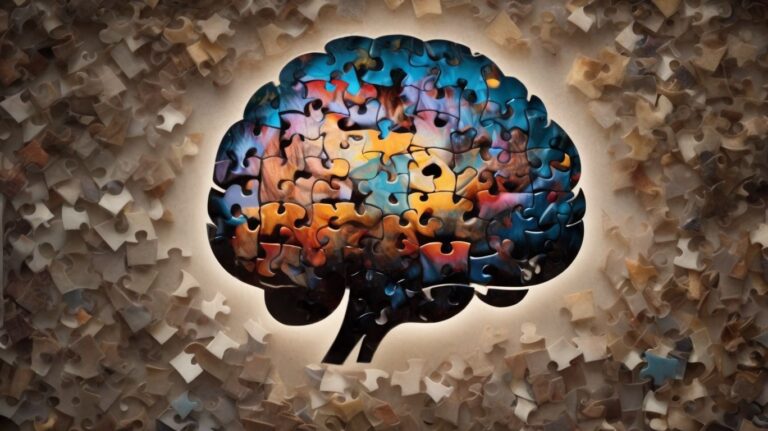Have you ever wondered how our brains become more sensitive to certain stimuli over time? In the field of psychology, this phenomenon is known as sensitization. But what exactly is sensitization, and how does it affect our behavior?
In this article, we will explore the mechanisms of sensitization, including neuroplasticity, sensory adaptation, classical conditioning, fear conditioning, sensory deprivation, and habituation. We will also discuss the factors that influence sensitization, such as genetics, environment, age, and previous experiences. We will compare sensitization to other types of learning, such as habituation, desensitization, and sensory adaptation. Join us as we unravel the complexities of sensitization in psychology.
Contents
What Is Sensitization in Psychology?
Sensitization in psychology refers to the process by which repeated exposure to a stimulus results in an increased response, often leading to heightened reactions or perceptions.
This phenomenon plays a significant role in shaping behavior and emotions. Neurons in the brain become more responsive to the repeated stimulus, creating a lasting change in how the individual reacts to it. Sensitization can occur through various forms of stimuli, including sensory inputs, environmental cues, or even emotional triggers. This heightened sensitivity can have both positive and negative effects, influencing decision-making, memory consolidation, and overall psychological well-being. In therapeutic settings, understanding sensitization helps in designing effective interventions for conditions like phobias, addiction, and trauma.
What Are the Mechanisms of Sensitization?
The mechanisms of sensitization involve complex neural processes influenced by the findings of prominent figures such as Eric Kandel, emphasizing the role of long-term potentiation (LTP) and kindling in neural sensitization.
Neural sensitization, a phenomenon characterized by an increased response to a stimulus over time, reflects the plasticity of the nervous system. Eric Kandel’s research on the mechanisms of memory at the synaptic level has shed light on the molecular basis of sensitization. Long-term potentiation (LTP) plays a crucial role in strengthening neural connections, leading to persistent changes in synaptic efficacy. The Mechanisms of Sensitization in Psychology showcases the gradual amplification of neuronal responses induced by kindling, a form of neural plasticity induced by repeated low-intensity stimuli.
Neuroplasticity
Neuroplasticity is a fundamental aspect of sensitization, involving changes in synaptic strength and connectivity, with long-term potentiation (LTP) and kindling playing pivotal roles in reinforcing neural pathways associated with heightened responses.
These neural adaptations occur due to repeated stimulation, leading to alterations in synaptic efficacy and neural circuitry.
Long-term potentiation (LTP) facilitates the strengthening of synapses, enhancing signal transmission between neurons to consolidate learning and memory. On the other hand, kindling involves the progressive and enduring increase in neural excitability, contributing to the sensitization process.
Sensory Adaptation
Sensory adaptation is a key mechanism in sensitization, involving the gradual decrease in response to a constant stimulus, which contrasts the heightened responses characteristic of sensitized states.
When an individual is exposed to a continuous stimulus, the sensory receptors start to adjust their sensitivity levels to maintain optimal functioning. This adjustment process, known as sensory adaptation, allows the system to filter out irrelevant information and focus on changes in the environment that are of crucial importance. This phenomenon is essential for daily functioning, as it prevents sensory overload and improves the detection of new or significant stimuli.
In contrast, sensitization amplifies responses to stimuli, making individuals more responsive and vigilant to potential threats or opportunities.
Classical Conditioning
Classical conditioning plays a role in sensitization by associating a neutral stimulus with an unconditioned stimulus to elicit a heightened response, demonstrating the impact of learned associations on sensitized reactions.
This process involves the repeated pairing of the neutral stimulus with the unconditioned stimulus until the neutral stimulus alone can evoke the heightened response. Through this repeated association, the brain forms a connection between the two stimuli, leading to the development of a conditioned reflex. Over time, this learned association results in the neutral stimulus triggering the heightened response without the presence of the unconditioned stimulus. This classical conditioning phenomenon shows how our responses can be influenced and modified by our experiences and interactions with the environment.
Fear Conditioning
Fear conditioning, a form of associative learning, contributes to sensitization by linking a neutral stimulus with a fear-inducing one, resulting in heightened responses and increased sensitivity to related stimuli.
In fear conditioning, the neutral stimulus, when paired with the fear-inducing stimulus, acquires the ability to evoke fear responses even in the absence of the aversive event. This process of associative learning plays a crucial role in how individuals learn to anticipate threats and danger, shaping their behavioral responses. The conditioned fear response, such as elevated heart rate and heightened vigilance, reflects the learned association between the stimuli. Fear conditioning is essential for survival as it helps organisms adapt to potential threats in their environment effectively.
Sensory Deprivation
Sensory deprivation can lead to sensitization as the absence of normal stimuli can amplify responses to subsequent stimuli, affecting neural processing and enhancing sensitivity to sensory inputs.
This phenomenon of heightened responses after the removal of sensory stimulation has been widely studied in various contexts. The process of sensitization occurs when the nervous system becomes more reactive to stimuli due to prior exposure to an intense or prolonged stimulus. Sensory deprivation can exacerbate this process by priming the neural circuits to respond more strongly to incoming sensory information, leading to an exaggerated perception of sensory inputs.
Habituation
Habituation, the process of diminishing responses to repeated stimuli, contrasts with sensitization by highlighting the reduced reactivity to familiar stimuli compared to the heightened responses seen in sensitized states.
Further elaborating on this distinction, habituation involves the brain adapting to a constant stimulus, resulting in a decreased reaction over time. This phenomenon allows individuals to filter out irrelevant or non-threatening stimuli, conserving cognitive resources for more meaningful inputs.
On the other hand, sensitization amplifies responses to stimuli, making individuals more responsive to potentially important or alarming cues. This heightened alertness can enhance survival instincts in threatening situations, showcasing the adaptive nature of sensitization.
How Does Sensitization Affect Behavior?
Sensitization can significantly influence behavior by modifying responses to stimuli, potentially leading to exaggerated reactions, altered perceptions, and increased sensitivity in individuals.
This altered behavioral response can manifest in various ways, such as heightened vigilance towards previously neutral stimuli, intense emotional reactions to triggering events, or even a lower tolerance threshold for certain triggers.
It is crucial to understand that sensitization is not a static process; it can evolve over time, amplifying certain responses while diminishing others, shaping an individual’s overall behavioral repertoire.
This heightened reactivity can impact daily interactions, creating challenges in social settings or triggering avoidance behaviors to circumvent potential stressors.
What Are the Factors That Influence Sensitization?
Several factors influence sensitization, including genetic predispositions, environmental influences, age-related changes, and the impact of prior experiences on individual susceptibility to heightened responses.
Genetic predispositions play a crucial role in determining an individual’s response to sensitization, as genetic variations can impact how the immune system reacts to certain stimuli.
Environmental influences such as exposure to allergens, pollutants, and lifestyle factors can also contribute to the development of sensitivities.
Age-related changes, like a decline in immune function or increased exposure to potential allergens over time, can further influence one’s susceptibility to sensitization.
Past experiences, including previous allergic reactions or sensitivities, can also shape an individual’s immune response and overall sensitivity levels.
Genetics
Genetics play a significant role in sensitization, influencing an individual’s predisposition to heightened responses, with genetic variations contributing to differences in sensitivity and responsiveness.
Through the intricate interplay of genes involved in the regulation of immune responses, genetic factors dictate the degree of immune reactivity towards specific allergens, establishing an individual’s unique sensitization profile. These genetic predispositions can manifest in varying degrees of sensitivity, shaping how the body perceives and reacts to external stimuli. It is crucial to understand that genetic susceptibility is not a fixed state but rather a dynamic process influenced by various environmental factors that can either exacerbate or dampen sensitization responses.
Environment
Environmental factors can shape sensitization responses by exposing individuals to stimuli that may trigger heightened reactions, highlighting the role of surroundings in modifying sensitivity levels.
These factors can range from allergens present in the air to the overall climate conditions that individuals are exposed to on a daily basis. For instance, individuals living in urban areas may experience increased sensitization due to higher levels of air pollution and exposure to various pollutants. Temperature and humidity levels have been linked to exacerbating sensitization responses, with extreme variations potentially intensifying reactions. By understanding the intricate connection between environmental conditions and sensitization outcomes, we can better comprehend how external influences impact our immune system’s response sensitivities.
Age
Age-related changes can influence sensitization processes, with developmental stages impacting the susceptibility to heightened responses and altered sensitivities over the lifespan.
Children, for instance, may exhibit heightened sensitivities to environmental factors due to their developing immune systems and neural pathways.
Adolescents, on the other hand, might experience increased sensitization to emotional stimuli as their brains undergo significant restructuring.
Older adults often display decreased sensitization thresholds, making them more prone to exaggerated reactions and potential allergies. These age-related factors can shape how individuals respond to various triggers and play a crucial role in determining the overall sensitization process throughout different life stages.
Previous Experiences
Past experiences can influence sensitization outcomes by shaping individual responses to stimuli based on prior encounters, demonstrating the impact of learning on heightened reactions.
These experiential influences can be traced back to conditioning processes embedded in the brain, where neural pathways are established and reinforced through repeated exposure to specific triggers or events. Memory consolidation plays a crucial role in this process, as it allows the brain to retain information from past experiences and use it to modulate future responses.
The concept of sensory gating comes into play when examining how prior encounters affect response patterns. Sensory gating refers to the brain’s ability to filter out irrelevant stimuli, prioritizing important information based on past relevance and significance.
How Is Sensitization Different from Other Types of Learning?
Sensitization stands apart from other types of learning such as habituation, desensitization, and sensory adaptation by emphasizing heightened responses to stimuli rather than reduced reactivity or habit formation.
Unlike habituation where the response decreases with repeated exposure, sensitization involves an amplification of the response. In desensitization, the individual shows a decreased reaction to a stimulus over time due to repeated exposure. Sensory adaptation, on the other hand, involves the sensory system becoming less sensitive to a constant stimulus.
Sensitization, however, leads to an increased sensitivity and reactivity to stimuli, contributing to a state of hyperarousal. This process is crucial in understanding how an individual can develop exaggerated responses to specific triggers or cues, often seen in conditions like PTSD.
Sensitization vs. Habituation
Sensitization differs from habituation by leading to heightened responses to repeated stimuli, in contrast to habituation’s characteristic reduction in reactivity and familiarization with recurring stimuli.
While sensitization amplifies the response intensity over time, habituation involves a gradual decrease in response strength.
- Moreover, sensitization can result in hyperarousal, increased sensitivity, and exaggerated reactions to stimuli, often associated with anxiety disorders or phobias.
- On the other hand, habituation promotes adaptability, allowing organisms to allocate resources more efficiently by not wasting energy on irrelevant or harmless stimuli.
Sensitization vs. Desensitization
Sensitization contrasts with desensitization by amplifying responses to stimuli, rather than reducing sensitivity or responsiveness as seen in desensitized states.
Enhanced neural excitability plays a pivotal role in the sensitization process, in which repetitive exposure to a stimulus heightens the response of sensory neurons. This heightened sensitivity results in hypersensitivity to subsequent stimuli, often leading to exaggerated responses or magnified reactions. On the contrary, desensitization involves a decreased response to stimuli over time, causing a reduction in sensitivity. The mechanisms underlying sensitization involve changes in synaptic strength and alterations in neuronal plasticity, contributing to the magnification of responses. Such processes showcase the intricate balance between heightened responses and reduced sensitivities in the human nervous system.
Sensitization vs. Sensory Adaptation
Sensitization differs from sensory adaptation by causing increased responses to stimuli, as opposed to the decreased reactions and acclimatization observed in sensory adaptation processes.
While sensory adaptation involves the nervous system’s adjustment to prolonged exposure to a stimulus, sensitization heightens responses, making subsequent exposures more impactful. Contrastingly, in sensory adaptation, the neurons become less responsive over time to maintain efficiency, whereas in sensitization, the increased sensitivity enhances the organism’s reaction to stimuli.
Furthermore, sensitization can occur in various contexts, such as environmental or behavioral changes, leading to amplified responses with each exposure. This heightened reactivity can have a significant impact on an individual’s overall perception and behavioral responses.
Frequently Asked Questions
What is sensitization in psychology?
Sensitization in psychology refers to the process of becoming more responsive or reactive to a specific stimulus over time. It is a type of learning that results in an increased sensitivity to a particular stimulus.
What are the mechanisms involved in sensitization?
The mechanisms of sensitization involve the nervous system and the brain, specifically the limbic system. The process of sensitization occurs when repeated exposure to a stimulus causes an increase in the activity of neurons in the brain, leading to heightened responsiveness to the stimulus.
How does sensitization differ from habituation?
While sensitization involves an increase in response to a stimulus, habituation is the process of becoming less responsive to a repeated stimulus. In sensitization, the response becomes stronger, while in habituation, it becomes weaker.
Can sensitization be harmful?
Although sensitization is a normal and necessary process in learning, it can become harmful when it leads to exaggerated, persistent, or inappropriate responses to a stimulus. This can manifest in conditions such as post-traumatic stress disorder or phobias.
What are some real-life examples of sensitization?
One of the most common examples of sensitization is when a person develops an allergy after repeated exposure to an allergen. Another example is when a person becomes increasingly sensitive to loud noises after being constantly exposed to them.
Can sensitization be reversed?
Yes, sensitization can be reversed through a process called desensitization. This involves gradual exposure to the stimulus in a controlled and safe environment, which helps to reduce the exaggerated response and lessen the sensitivity to the stimulus.



